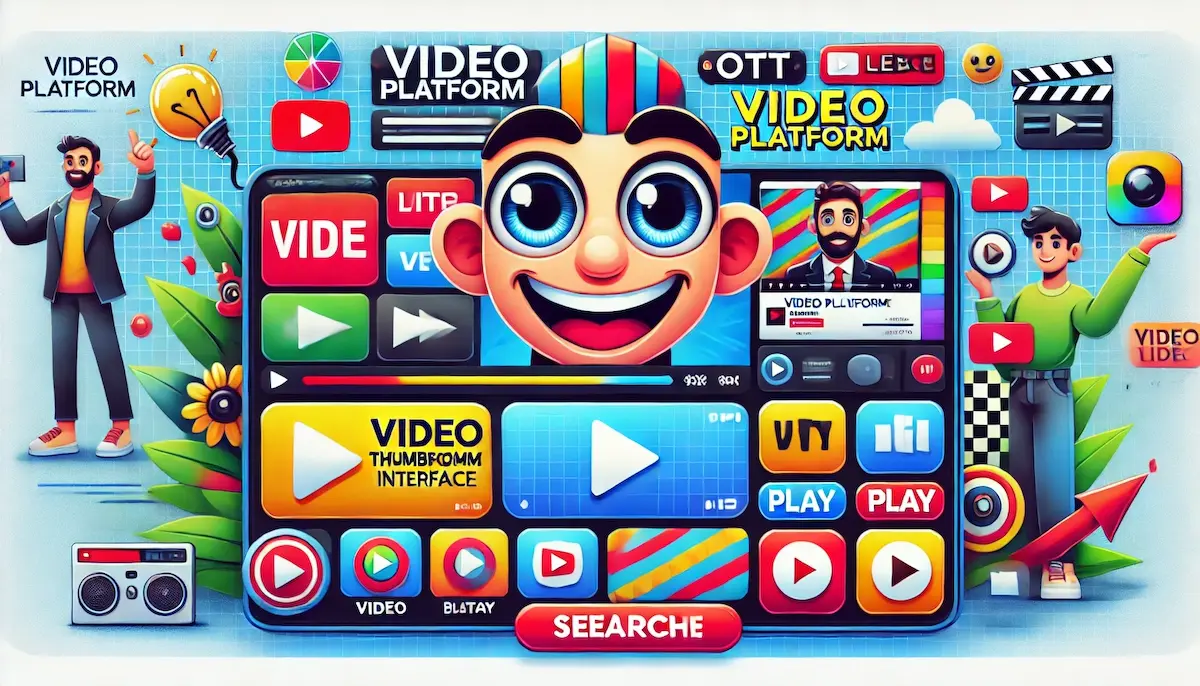Over-the-top (OTT) video platforms have revolutionized how we consume media, providing viewers with unparalleled access to a vast array of content. These platforms deliver video content directly over the internet, bypassing traditional cable or satellite television providers. Let’s explore what OTT video platforms are, how they operate, and their significance in the modern media landscape.
What is an OTT Video Platform?
An OTT video platform is a service that streams video content over the internet directly to viewers’ devices. These platforms offer a variety of content, including movies, TV shows, live sports, and original programming. Unlike traditional broadcast or cable TV, OTT platforms allow users to access content on-demand, providing greater flexibility and convenience.
How OTT Video Platforms Work
OTT video platforms rely on several key components and technologies to deliver content seamlessly:
Content Acquisition and Licensing
OTT platforms acquire content through licensing agreements with studios, networks, and independent creators. They may also produce original content to attract and retain subscribers. Content acquisition involves negotiations to secure rights for streaming, often including global distribution deals.
Content Hosting and Delivery
- Content Storage: Acquired content is stored on servers maintained by the platform. These servers are designed to handle large volumes of data and deliver content efficiently.
- Content Delivery Networks (CDNs): CDNs play a critical role in ensuring fast and reliable content delivery. They distribute the content across a network of servers located worldwide, minimizing latency and buffering by serving content from the server closest to the user.
User Access and Playback
Users access OTT platforms through various devices, such as smart TVs, streaming devices (like Roku and Amazon Fire Stick), smartphones, tablets, and computers. The platforms offer apps or web interfaces that users can navigate to select and play content.
Adaptive Bitrate Streaming
To ensure a smooth viewing experience, OTT platforms use adaptive bitrate streaming. This technology adjusts the quality of the video stream in real-time based on the user’s internet connection speed, providing the best possible quality without interruptions.
Popular OTT Video Platforms
Several OTT video platforms have gained immense popularity, each offering unique features and content libraries:
- Netflix: Known for its vast library of movies, TV shows, and original programming like “Stranger Things” and “The Crown.”
- Amazon Prime Video: Offers a mix of licensed content and Amazon Originals such as “The Marvelous Mrs. Maisel” and “The Boys.”
- Disney+: Features content from Disney, Pixar, Marvel, Star Wars, and National Geographic.
- Hulu: Provides a combination of on-demand shows, live TV, and original series.
- YouTube: Allows users to upload and stream a wide variety of content, including user-generated videos, live streams, and premium content through YouTube Premium.
Benefits of OTT Video Platforms
OTT video platforms offer numerous advantages that contribute to their widespread adoption:
Convenience
Users can watch their favorite content anytime, anywhere, and on multiple devices, offering unparalleled convenience compared to traditional TV.
Personalization
Many OTT platforms use sophisticated algorithms to recommend content based on users’ viewing habits and preferences, providing a tailored viewing experience.
Cost-Effectiveness
OTT services often offer competitive pricing and various subscription tiers, making them more affordable than traditional cable packages. Additionally, users can choose to subscribe to multiple services to access a broader range of content.
No Long-Term Contracts
Most OTT platforms operate on a subscription basis without requiring long-term commitments, allowing users to cancel or change their subscriptions easily.
The Future of OTT Video Platforms
The future of OTT video platforms is bright, with continued advancements in technology and content offerings:
- 5G Connectivity: Faster and more reliable internet speeds with 5G will enhance the streaming experience, allowing for higher-quality video and reduced buffering.
- Original Content Production: Investment in original content will likely increase, as platforms strive to differentiate themselves and attract subscribers.
- Interactive and Immersive Content: Innovations in virtual reality (VR) and augmented reality (AR) may lead to new types of interactive and immersive content experiences.
OTT video platforms have undoubtedly changed the way we consume media, offering flexibility, personalization, and a vast array of content options. As technology evolves, these platforms will continue to shape the future of entertainment.
Blockfine thanks you for reading and hopes you found this article helpful.
